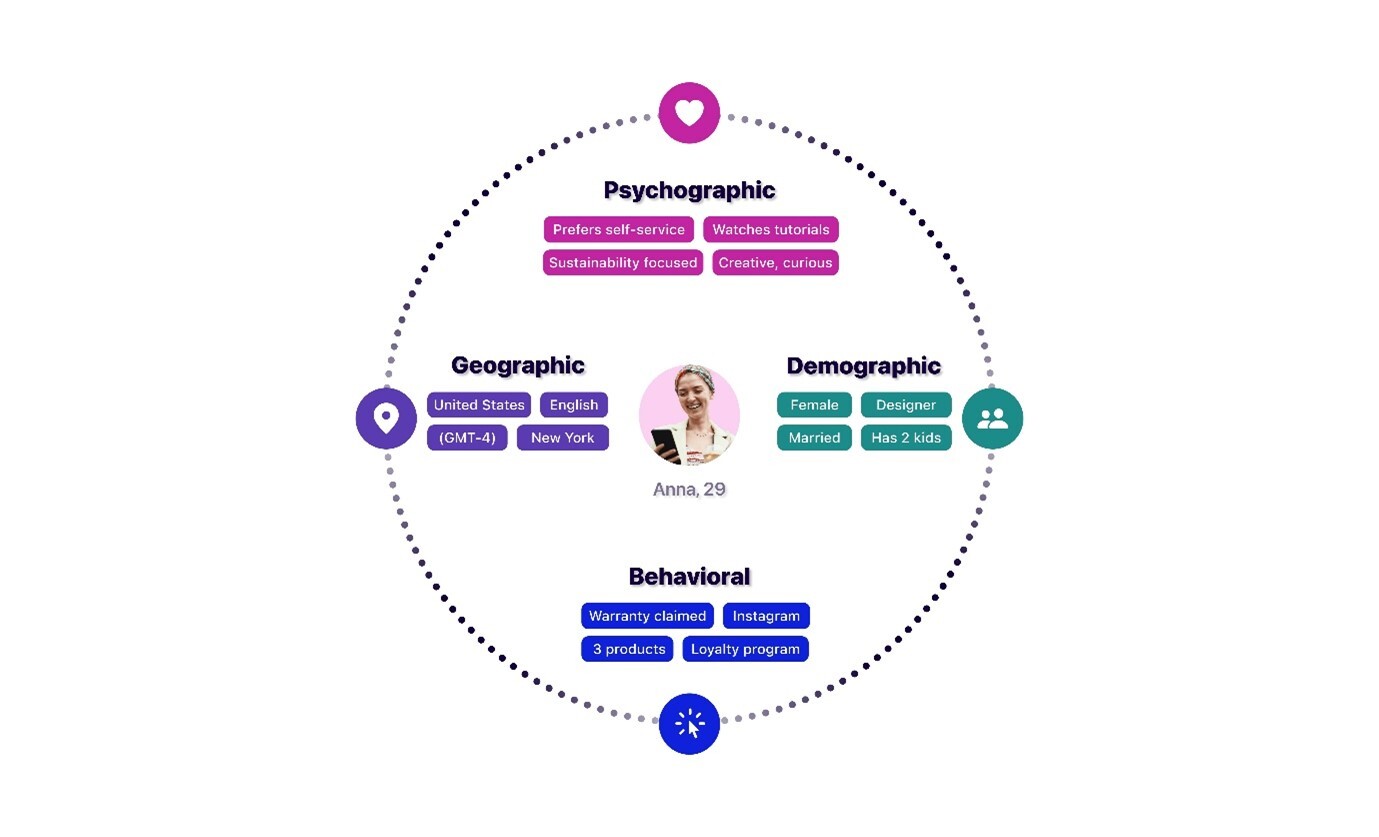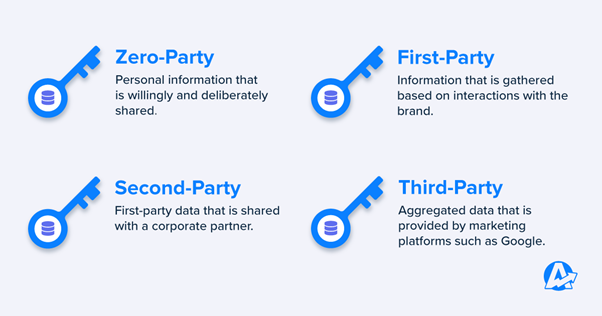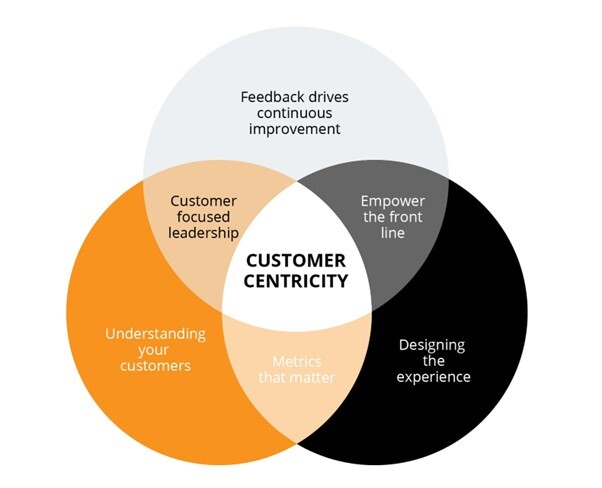In this dynamic landscape, where the convergence of data-driven insights and seamless customer experiences is essential, harnessing first-party data and customer journey mapping offers a strategic advantage that goes beyond mere marketing; it becomes a cornerstone for building lasting relationships and driving success in the fast-changing business arena. Through the strategic collection and utilization of first-party data, which comprises information directly obtained from customers and stakeholders, businesses gain unparalleled insights into their preferences, behaviors, and needs.
In a 2022 survey, 37% of global business managers and executives, who had a deep understanding of their company's customer experience, marketing technology, and customer data strategies, revealed that their brands currently rely solely on first-party data to personalize consumer experiences.
This blog post dives deep into two powerful duos used by organizations to achieve a comprehensive understanding of their customers - First-Party Data and Customer Journey Mapping. From driving effective marketing campaigns to creating personalized experiences, these tools provide valuable insights and help shape robust strategies to engage customers and drive business growth.
Importance of Customer Journey Mapping and Why It Matters
In the absence of this power duo, you won't have the full scoop on what your customers like or how they behave. Plus, you'll be fumbling with your tech tools, making it tough to make smart decisions, warm up those leads, and sprinkle some magic on the customer experience. Therefore, in the world of both First-Party Data and Customer Journey Mapping, gaining invaluable insights into your customer's behavior is of paramount importance.
Customer journey mapping is like creating a roadmap of the steps your customers take when they interact with your business, from first discovering it to becoming loyal customers, resulting in a strong and direct relationship. It's essential in today's marketing because it gives you the visibility of where your customers are coming from, what they're looking for, and how they feel about their experience. This insight allows you to make improvements and offer a more personalized and satisfying journey for your customers, which can lead to greater success for your business.
Benefits of Customer Journey Mapping: Uncovering Challenges, Potential, and Pain Points
Customer journey mapping isn't just a trendy buzzword; it's a real game-changer in modern marketing. This mapping allows you to pinpoint their "ouch" moments, opportunities to shine, and places where you can engage with them more effectively. When you map the customer journey, you're essentially tracing your customer's steps when they interact with your business via different communication channels. These challenges or pain points can be identified from zero-party data, which is explicitly provided by the customers themselves often in response to direct questions or requests from the business, survey responses, feedback forms, and product preferences.

For example, let's say you run a B2B online platform, and you notice that a lot of customers drop off at the confirm payment stage. By mapping the customer journey, you discover this as a pain point. So, you revamp the payment process, making it more user-friendly and transparent. As a result, more customers complete their purchases, boosting your sales and getting you the highest return.
Harnessing the Power of First-Party Data
First-party data is the entity that empowers companies to carry out predictive analysis, enabling them to chart the ideal path for each stakeholder's interaction with their digital interactions in the marketing ecosystem. First-party data is crucial for your business and is preferred over third-party cookies because it's the information you collect directly from your customers to obtain accurate and specific insights. On the other hand, third-party cookies rely on external sources and can be unreliable due to privacy concerns and restrictions.
The First-party data includes details like their name, email, and their activities on your website or app. This data is essential because it's the most trustworthy and reliable source for understanding your customers and tailoring your products or services to meet their needs. With businesses increasingly focusing on this invaluable resource, the following points explore how to strike gold in your customer insights journey.
Revealing the Magic of First-Party Data: Crafting a Comprehensive Customer Portrait
In today's fast-paced world of data-driven marketing, first-party data is your treasure trove. According to a recent survey, a staggering 92% of leading marketers believe that using first-party data to continuously build an understanding of what people want is critical to growth.
First-party data empowers businesses to construct a comprehensive, all-encompassing view of their customers' interactions and preferences. Imagine, for instance, a leading online retailer. By collecting and analyzing data directly from their website and app users, they gain insights into not only the purchase history of the customer but also the pages visited, products browsed, and even feedback provided through reviews and customer support inquiries.

Another key advantage of first-party data is its ability to enhance targeting precision and addressability. When you have a deep understanding of your customers, their preferences, and what influences their buying decisions, you can create highly refined marketing strategies and loyalty programs. This may involve building detailed user profiles for personalized content and tailoring ad placements based on browsing behavior.

First-party data also enables you to identify and reach specific audience segments based on demographics, behavior, and preferences, ensuring effective communication through suitable channels. This precision is particularly valuable for Search Engine Optimization (SEO), as it allows you to craft more relevant and engaging content, potentially improving your website's search engine ranking, relevance, bounce rates, and overall performance.
Role of Data Privacy and Transparency in Establishing Trust
The role of data privacy and transparency is paramount in establishing trust and securing accurate first-party data. Customers are increasingly concerned about the usage and sharing of their data. By respecting their privacy and being transparent about data practices, you can gain their trust and encourage them to share precise information. This accurate first-party data is akin to a treasure chest, enabling businesses to offer superior products and services tailored to individual preferences while abiding by data protection regulations. So, it's not merely about data collection; it's about collecting it in a trustworthy manner to foster trust and deliver exceptional customer experiences.

By prioritizing transparency and respecting privacy, you can harness the value of accurate first-party data, enabling them to provide personalized experiences while remaining compliant. This shift underscores the importance of building strong customer relationships and is poised to shape the future of data-driven marketing strategies.
Best Practices for Implementing an Optimal First-Party Data Approach to Map the Customer Journey
By understanding and following these best practices, you can unlock the full potential of first-party data, ultimately enhancing customer experiences and staying ahead in a dynamic market.

1. Mapping Touchpoints for Personalized Experiences
With first-party data in your hands, your business can navigate the complex landscape of customer interactions across different channels. This data enables you to identify each touchpoint, whether it's a website visit, email interaction, or content marketing and syndication. By connecting these dots, you can create a comprehensive view of the customer journey, allowing you to anticipate their needs and preferences.
This helps in tailoring your marketing strategies, communications, and products/services to match their preferences, ultimately fostering a more personalized and memorable customer experience. You can also utilize this wealth of data to predict future trends, enabling proactive planning that will keep you ahead of the competition.
2. Magic of Personalization
Aligning your messaging, offers, and content with what you know about your customers is the key. Thanks to first-party data, you have insights into their past behavior, what products or services they've shown interest in, and even
their feedback. Armed with this knowledge, you can craft tailored experiences that resonate with each customer. From recommending products they're likely to love to sending them personalized offers, you can build a connection that goes beyond mere transactions.
For instance, if a customer frequently browses your website for cloud computation services, you can send them an email featuring the latest updates with a special discount. This not only boosts the chances of a purchase but also shows your customers that you truly understand their interests. It's all about enhancing their journey with your brand, and first-party data is your compass in this exciting adventure.
3. Creating Contextual Engagement
Understanding the importance of first-party data in driving this contextual engagement cannot be overstated. When you gather data directly from your customers through their interactions with your brand—whether it be through website visits, purchases, or customer service calls—you gain invaluable insights into their preferences and behaviors. By leveraging this data effectively, you create customer journey maps that highlight the touchpoints and channels where your audience is most active. Implementing these maps enables you to provide personalized experiences that resonate deeply with your audience.
For instance, if your first-party data indicates a subset of customers frequently purchases eco-friendly products, you can use this insight to tailor your marketing messages, suggesting similar products or sharing sustainability tips. This approach not only helps in building trust and loyalty but also significantly improves conversion rates as you're speaking directly to the customer's interests. In a digital landscape overflowing with generic advertising, using first-party data to inform your contextual engagement strategy makes your brand stand out by offering relevance and personalization at every stage of the customer journey.
4. Engaging with Customers Based on Real-time Behavior and Preferences
First-party data plays a pivotal role in making this happen. It allows businesses to connect with customers in real-time, taking into account their actions and interests as they occur. This means that if a customer is browsing a specific product on your website, you can immediately engage them with relevant content or offers related to that product, increasing the chances of a conversion.

By meticulously tracking and analyzing every touchpoint a customer has with your brand, you gain invaluable insights that empower you to tailor their experience like never before. Imagine a scenario where a customer adds an item to their shopping cart but doesn't complete the purchase. With the right data analysis tools in place, you can trigger a personalized email or push notification to nudge them toward checkout. This level of precision in customer engagement isn't just effective — it's expected by today's consumers who seek bespoke treatment. In a world saturated with generic marketing messages, using first-party data to personalize the customer's journey not only sets your brand apart but also significantly boosts your SEO efforts as it increases user engagement and time spent on your site, signaling to search engines that your content is valuable and relevant.
5. Delivering Timely and Relevant Messages using First-party Data Insights
To deliver timely and relevant messages using first-party data insights, businesses can employ various strategies. For instance, you can set up automated triggers, such as sending an email when a customer abandons their online shopping cart. Or, you can use personalization based on a customer's past behavior, like recommending products they've previously shown interest in. These strategies are not just about reaching out but about reaching out at the right moment with the right content, which can significantly boost customer engagement and satisfaction. It's all about making your customers feel heard and valued, ultimately fostering stronger connections and brand loyalty.
Imagine you're having a genuine conversation with someone, and you're paying attention to what they're saying and how they're feeling. That's what creating contextual engagement is all about in marketing. It's like having a heart-to-heart with your customers but in the digital realm.
6. Nurturing Customer Connections through Insights Informed by Data
From precision in product recommendations to targeted loyalty-building initiatives, the technical aspect of data-driven insights equips businesses to deliver personalized experiences that resonate with customers. These insights are invaluable, fostering robust, long-lasting customer relationships grounded in trust and customization. As a business owner, harnessing this power of data-driven insights means making informed decisions that can substantially impact your bottom line and brand loyalty. It's not just a friendly barista; it's the strategic edge that sets you apart and keeps customers returning with confidence.
Conclusion
In this era of digital transformation, the strategic deployment of first-party data emerges as an indispensable marketing tool. It empowers businesses to address all stakeholders, from customers to business partners and suppliers, with a level of personalization and precision essential in today's digital landscape.
At S2W Media, we understand the evolving landscape of data-driven marketing, and we're here to help you navigate this exciting journey. Our cutting-edge first-party data offerings and insights empower your business to make informed decisions, craft personalized experiences, and build unbreakable customer relationships. In the Industry 4.0 era, it's more than just about data; it's about steering your marketing strategies to reach new heights of success.



